Yun C Huang
age ~41
from Palo Alto, CA
- Also known as:
-
- Yu N Huang
- Hung Yun
Yun Huang Phones & Addresses
- Palo Alto, CA
- 3626 Countrywood Ct, San Jose, CA 95130 • (650)7998763
- La Jolla, CA
- Mountain View, CA
- Santa Clara, CA
Us Patents
-
Systems And Methods Of Performing Vibro-Acoustic Analysis Of A Structure
view source -
US Patent:8306793, Nov 6, 2012
-
Filed:Sep 14, 2010
-
Appl. No.:12/881467
-
Inventors:Yun Huang - Livermore CA, US
Mhamed Souli - Livermore CA, US
C. Cleveland Ashcraft - Kingston ID, US -
Assignee:Livermore Software Technology Corporation - Livermore CA
-
International Classification:G06F 17/50
-
US Classification:703 2, 703 5, 703 7, 703 17, 324309, 702 56, 257416
-
Abstract:Methods and systems for simulating acoustic field resulted from particular excitations by performing vibro-acoustic analysis of a structure are disclosed. According to one aspect of the present invention, vibro-acoustic analysis of a structure is performed in two stages. First, steady state dynamic (SSD) responses are obtained using a finite element analysis model of a structure subject to harmonic excitations (e. g. , external nodal loads, pressures, or enforced motions (e. g. , ground motions), etc. ). The steady state responses are the results (e. g. , nodal velocities at desired locations of the structure) obtained in a finite element analysis in frequency-domain. Second, an acoustic analysis is conducted according to Helmholtz equation using the nodal velocities obtained at desired locations on the structure as a boundary condition. The acoustic analysis can be performed in a number of procedures (e. g. , boundary element method, Rayleigh approximation method, etc. ).
-
Optimized Display Of Ad Landing Page
view source -
US Patent:8612291, Dec 17, 2013
-
Filed:May 6, 2011
-
Appl. No.:13/102512
-
Inventors:Yun Huang - Mountain View CA, US
Amit Khanna - Sunnyvale CA, US
Timothy Lai - Belmont CA, US -
Assignee:Google Inc. - Mountain View CA
-
International Classification:G06Q 30/00
G05B 19/418 -
US Classification:705 1445, 705 1473, 715736
-
Abstract:Methods, systems, and apparatus, including a computer program product for optimizing the display of landing pages in restrictive display environments are provided. A determined area or region of the landing page is identified. Upon receiving a request for content items to be presented on a device, a plurality of content items are identified for presentation on the device, each of the content items having an associated landing page destination address. If the requesting device is a restricted display device, a hash tag is appended to each of the associated destination addresses, each hash tag corresponding to a predefined section of an associated landing page. The plurality of identified content items are transmitted to the requesting device for presentation.
-
Method And Apparatus For Inserting Advertisements In Content
view source -
US Patent:20120185895, Jul 19, 2012
-
Filed:Jan 13, 2011
-
Appl. No.:13/006069
-
Inventors:Marshall Wong - New York NY, US
Hsisheng Mark Sun - San Ramon CA, US
Yun Huang - San Jose CA, US -
International Classification:H04N 7/173
H04N 7/10 -
US Classification:725 32, 725 88
-
Abstract:In accordance with some embodiments, advertisements may be inserted into ongoing content using predefined break points within that content. For example, the break points may be defined by times within the content and specify advantageous situations for the interruption of the ongoing content and the insertion of commercials. In some embodiments, conditions may be placed on the activities which may occur during the playback of commercials, including the disabling of fast forwarding. In addition, commercials may be automatically inserted in the predetermined content break point based on user provided criteria. In some embodiments, the user criteria may be applicable generally to all assets and, in other cases, the user criteria may be specific to a particular asset, but, in both cases, in some embodiments, the advertisements may be populated within the content automatically.
-
Optimized Display Of The Ad Landing Page
view source -
US Patent:20120284608, Nov 8, 2012
-
Filed:Sep 26, 2011
-
Appl. No.:13/244864
-
Inventors:Yun HUANG - Mountain View CA, US
Amit Khanna - Sunnyvale CA, US
Timothy Lai - Belmont CA, US -
International Classification:G06F 17/00
-
US Classification:715234
-
Abstract:Methods, systems, and apparatus, including a computer program product for optimizing the display of landing pages in restrictive display environments are provided. A determined area or region of the landing page is identified. Upon receiving a request for content items to be presented on a device, a plurality of content items are identified for presentation on the device, each of the content items having an associated landing page destination address. If the requesting device is a restricted display device, a hash tag is appended to each of the associated destination addresses, each hash tag corresponding to a predefined section of an associated landing page. The plurality of identified content items are transmitted to the requesting device for presentation.
-
Sequence Dependent Or Location Based Operation Processing Of Protocol Based Data Message Transmissions
view source -
US Patent:20180240211, Aug 23, 2018
-
Filed:May 16, 2017
-
Appl. No.:15/596943
-
Inventors:- Mountain View CA, US
Terry Van Belle - Santa Clara CA, US
Anshul Kothari - Sunnyvale CA, US
Jian Zhou - Milpitas CA, US
Paul Feng - Palo Alto CA, US
Ravi Jain - Palo Alto CA, US
Nandita Narasimha Prabhu - Mountain View CA, US
Yun Huang - Mountain View CA, US
Gaurav Bhaya - Sunnyvale CA, US
Robert Stets - Mountain View CA, US -
Assignee:Google Inc. - Mountain View CA
-
International Classification:G06Q 90/00
G06Q 30/02 -
Abstract:Various methods, systems, and computer program products are disclosed for communicating location-based digital components to a mobile and other devices. A natural language processor component can parse an input audio signal to identify a request and a keyword. A content selector can select digital components based on keyword and request. An audio signal generator component can generate an output signal that includes a selected digital components. An interface can transmit the output signal to cause a client computing device to drive a speaker to generate an acoustic wave corresponding to the output signal prior to occurrence of at least one of the first action and the second action.
-
Systems And Methods For Determining Crack Propagation Length Inside A Structure Using A Technique Based On Acoustic Signature
view source -
US Patent:20180074022, Mar 15, 2018
-
Filed:Sep 13, 2016
-
Appl. No.:15/263891
-
Inventors:- Livermore CA, US
Yun Huang - Dublin CA, US -
International Classification:G01N 29/12
G01N 29/44 -
Abstract:Methods and systems for determining crack propagation length using a technique based on acoustic signature are disclosed. An acoustic signature is measured and recorded at a first location via acoustic wave generated by structural vibrations caused by a harmonic loading with predefined magnitude acted at a second location on the structure. Structure contains an unknown length of crack propagation inside. Unknown length is determined by comparing the measured and recorded acoustic signature with numerically-computed acoustic signatures stored in a database, which contains at least one relationship of the numerically-computed acoustic signatures versus respective crack propagation lengths at various stages of numerically-simulated crack propagation trajectory. Numerically-computed acoustic signatures are obtained by conducting a numerical time-marching simulation for obtaining a numerically-simulated crack propagation trajectory, and by conducting a SSD analysis and a vibro-acoustic analysis of the structure for obtaining the numerically-computed acoustic signatures at various stages of the numerically-simulated crack propagation trajectory.
-
Numerical Simulation Of Crack Propagation Due To Metal Fatigue
view source -
US Patent:20160034621, Feb 4, 2016
-
Filed:Aug 4, 2014
-
Appl. No.:14/450643
-
Inventors:- Livermore CA, US
Yun Huang - Dublin CA, US -
International Classification:G06F 17/50
-
Abstract:FEA model representing a metal object subjected to expected random vibration loadings during a predefined time period is received. Structural dynamic characteristics and responses of the FEA model are obtained. Cumulative damage ratios of all finite elements are computed using the obtained structural dynamic responses along with a S-N curve for the metal object, and predefined time period. Time and location of fatigue failure in the FEA model are determined by identifying which one of the finite elements fails first. The identified failed finite element's cumulative damage ratio reaches unity first. The FEA model is revised by removing the identified failed finite element. Then the revised FEA model is used for repeating the process of identifying another fatigue failure until the determined time of fatigue failure has passed the predefined time period. All identified failed finite elements represent simulated fatigue crack propagation.
Name / Title
Company / Classification
Phones & Addresses
Principal
SUPFLEX PONTOON MOORING SYSTEMS, INC
Business Services
Business Services
320 Turtle Crk Ct SUITE # J, San Jose, CA 95125
19451 Greenwood Dr, Cupertino, CA 95014
(408)2942621
19451 Greenwood Dr, Cupertino, CA 95014
(408)2942621
Owner
American Marine
Mfg Concrete Products Ret Marine Supplies
Mfg Concrete Products Ret Marine Supplies
PO Box 700658, San Jose, CA 95170
19451 Greenwood Dr, Cupertino, CA 95014
(408)9818930
19451 Greenwood Dr, Cupertino, CA 95014
(408)9818930
Director
China Information Technology (Nevada), Inc
D-YOUNG'S INCORPORATED
Royal B.Y. Investment Management, LLC
Investment Management · Open-End Management Investment
Investment Management · Open-End Management Investment
4201 Suzanne Dr, Palo Alto, CA 94306
(949)2449625
(949)2449625
Isbn (Books And Publications)

Computed Tomography of the Brain: Atlas of Normal Anatomy
view sourceAuthor
Yun Peng Huang
ISBN #
0387088253
Lawyers & Attorneys

Yun Huang - Lawyer
view sourceAddress:
Reed Smith Richards Butler
(250)79749xx (Office)
(250)79749xx (Office)
Licenses:
New York - Currently registered 2008
Education:
Northwestern University School of Law

Yun Yun Huang, San Francisco CA - Lawyer
view sourceAddress:
Zoosk, Inc.
989 Market St Fl 5, San Francisco, CA 94103
(415)5293021 (Office)
989 Market St Fl 5, San Francisco, CA 94103
(415)5293021 (Office)
Licenses:
California - Active 2008
Education:
University of Michigan Law School
Graduated - 2008
The University of British Columbia
Graduated - 2004
Graduated - 2008
The University of British Columbia
Graduated - 2004
Specialties:
Corporate / Incorporation - 40%
Securities / Investment Fraud - 40%
Venture Capital - 20%
Securities / Investment Fraud - 40%
Venture Capital - 20%

Yun Huang - Lawyer
view sourceOffice:
Reed Smith Richards Butler
Specialties:
Finance
ISLN:
921010386
Admitted:
2008
Law School:
Fudan University, LL.B., 2003; Northwestern University School of Law, LL.M., 2007

Yun Huang - Lawyer
view sourceSpecialties:
Securities & Investment Fraud
Corporate Law
Mergers & Acquisitions
Securities & Corporate Finance
Venture Capital & Emerging Companies
Corporate Law
Mergers & Acquisitions
Securities & Corporate Finance
Venture Capital & Emerging Companies
ISLN:
921057190
Admitted:
2008
University:
University of British Columbia, B.A., 2004
Law School:
University of Michigan Law School, J.D., 2008

Yun Yun Huang - Lawyer
view sourceISLN:
921057190
Admitted:
2008
University:
University of British Columbia, B.A.
Law School:
University of Michigan, J.D.
Resumes

Yun Huang
view sourceLocation:
4201 Suzanne Dr, Palo Alto, CA 94306

Yun Huang
view sourceLocation:
San Jose, CA
Industry:
Computer Software
Work:
Mckinsey & Company Beijing China Jul 2007 - Sep 2007
Internship
Internship
Education:
Carnegie Mellon University 2008 - 2009
Masters, Information Systems Tsinghua University 2002 - 2006
Masters, Information Systems Tsinghua University 2002 - 2006
Skills:
Software

Senior Engineering Manager
view sourceLocation:
San Jose, CA
Industry:
Computer Software
Work:
Cadent
Senior Engineering Manager
Cadent Apr 2010 - Apr 2011
Technician Lead
Core•Continuum Jun 2006 - Dec 2009
Technical Architect
Sapientrazorfish Jan 1999 - Jun 2006
Techinal Architect
Senior Engineering Manager
Cadent Apr 2010 - Apr 2011
Technician Lead
Core•Continuum Jun 2006 - Dec 2009
Technical Architect
Sapientrazorfish Jan 1999 - Jun 2006
Techinal Architect
Education:
Caltech 1992 - 1998
Doctorates, Doctor of Philosophy, Electrical Engineering Tsinghua University 1987 - 1992
Bachelor of Engineering, Bachelors
Doctorates, Doctor of Philosophy, Electrical Engineering Tsinghua University 1987 - 1992
Bachelor of Engineering, Bachelors
Skills:
Java
Enterprise Software
Agile Methodologies
Web Applications
Xml
Tomcat
J2Ee Application Development
Software Development Life Cycle
Software Architectural Design
Ruby on Rails
Ajax
Scrum
Hibernate
Web Services
Solr
Jboss Application Server
Engineering Management
Javascript
Mysql
Rdbms
Spring
Saas
Mvc Architecture
Enterprise Software
Agile Methodologies
Web Applications
Xml
Tomcat
J2Ee Application Development
Software Development Life Cycle
Software Architectural Design
Ruby on Rails
Ajax
Scrum
Hibernate
Web Services
Solr
Jboss Application Server
Engineering Management
Javascript
Mysql
Rdbms
Spring
Saas
Mvc Architecture

Yun Huang
view source
Yun Peng Huang
view source
Yun Huang
view source
Software Qa At Sophos
view sourceLocation:
Oxford, United Kingdom
Industry:
Computer & Network Security
Work:
Sophos Ltd - Abingdon Jan 2012 - Jul 2012
Software Automation Test Engineer
Sophos Ltd - Abingdon Jun 2004 - Dec 2011
Functional and System Test Engineer
C.A.R.L. COMMUNICATIONS LTD - Manchester, United Kingdom Sep 2003 - May 2004
Software Tester
TOPMODE SYSTEMS LTD - Birmingham, United Kingdom Jan 2001 - Jul 2002
Software Test Engineer - interim student
Software Automation Test Engineer
Sophos Ltd - Abingdon Jun 2004 - Dec 2011
Functional and System Test Engineer
C.A.R.L. COMMUNICATIONS LTD - Manchester, United Kingdom Sep 2003 - May 2004
Software Tester
TOPMODE SYSTEMS LTD - Birmingham, United Kingdom Jan 2001 - Jul 2002
Software Test Engineer - interim student
Education:
Staffordshire University 2000 - 2003
Master's degree, Computing Science ISEB
Learning Tree
Master's degree, Computing Science ISEB
Learning Tree
Skills:
Software Quality Assurance
ISEB Certified
Quality Center
TeamTrack
Agile Testing
Virtualization
Microsoft Environment
Microsoft Technologies
Manual Testing
Agile Methodologies
ISEB Certified
Quality Center
TeamTrack
Agile Testing
Virtualization
Microsoft Environment
Microsoft Technologies
Manual Testing
Agile Methodologies
Languages:
Chinese

Ya Yun Huang
view source
Yun Wen Huang
view source
Shi Yun Huang
view source
Yun Hua Huang
view source
Yun Yu Huang
view source
Huang Xiu Yun
view source
Yun Huang
view source
Yun Huang
view sourcePlaxo

yun huang
view source技术总监 at leku

Yun Huang
view sourceState of Tennessee
Classmates

Yun Huang
view sourceSchools:
University of Southern Misssissippi Hattiesburg MS 1983-1987
Community:
Jerry Eichelberger, Ernest Edwards, Kimberli Mims, Carolyn Mason

Yun Huang
view sourceSchools:
Jinan University Guangzhou China 1982-1986
Flickr
Googleplus
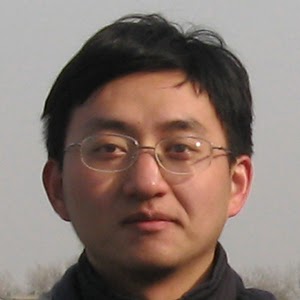
Yun Huang
Education:
National University of Singapore - Computer Science, Institute Of Computing Technology - Computer Science, Peking University - Computer Science
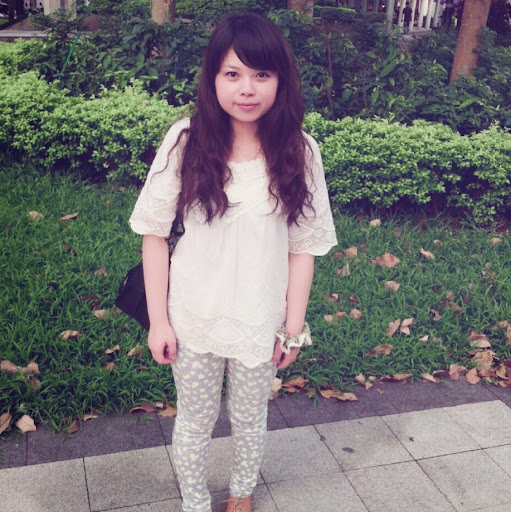
Yun Huang

Yun Huang
Education:
Uni Bonn - Life Science Informatics

Yun Huang
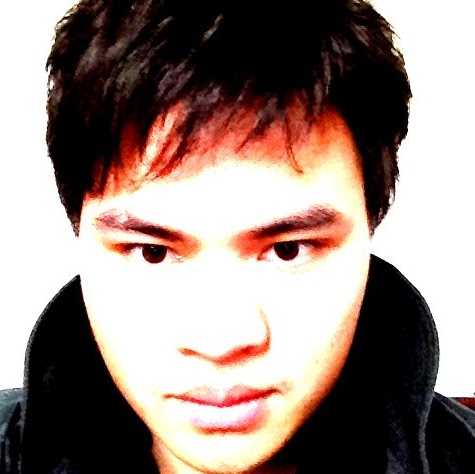
Yun Huang
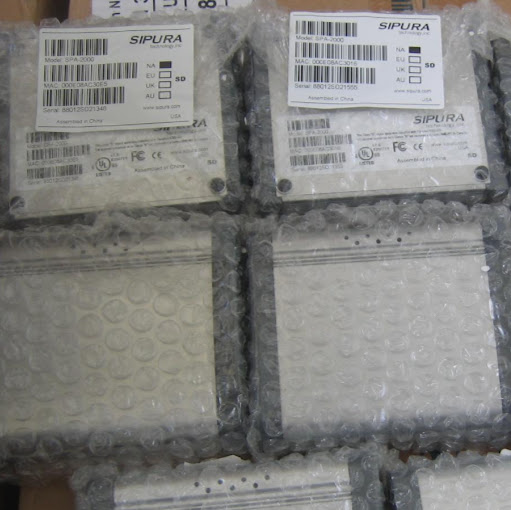
Yun Huang
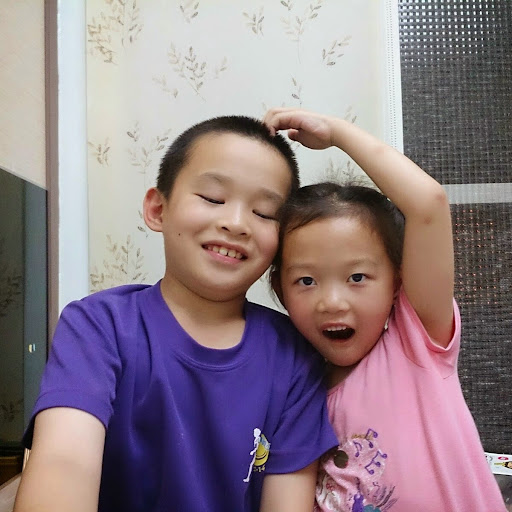
Yun Huang

Yun Huang
Youtube
Myspace
Get Report for Yun C Huang from Palo Alto, CA, age ~41










![[NYCP] Mozart - Sinfonia Concertante in E-flat maj... [NYCP] Mozart - Sinfonia Concertante in E-flat maj...](https://i.ytimg.com/vi/WaH86iR0aTs/hq720.jpg?sqp=-oaymwEcCNAFEJQDSFXyq4qpAw4IARUAAIhCGAFwAcABBg==&rs=AOn4CLCCORAIanxPUb080ZHGyyF4y141Ug)



